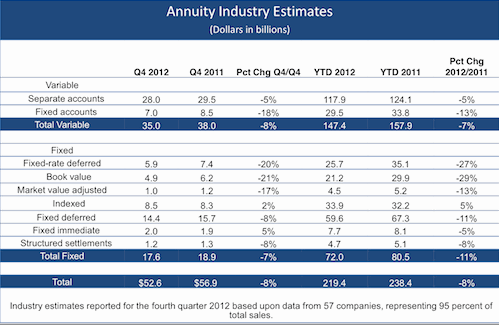
In Off-Year for Annuities, FIAs and DIAs Shine: LIMRA
Overall, annuity sales were $52.6 billion in the fourth quarter, down 8% from the previous year. For the year, annuity sales dropped 8%, tallying $219.4 billion. Variable annuity sales totaled $147.4 billion in 2012, down 7% from 2011.


